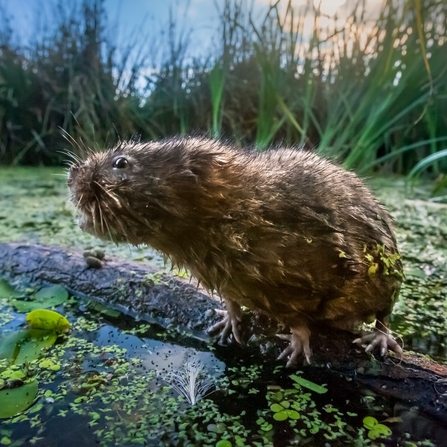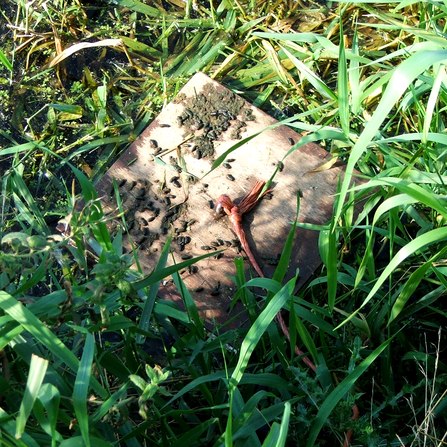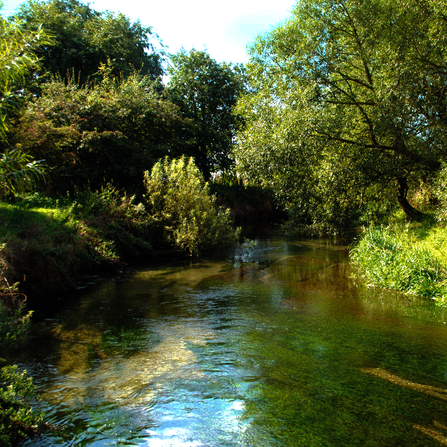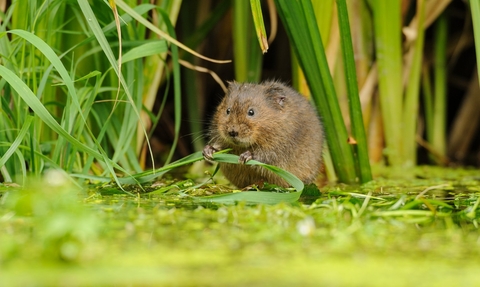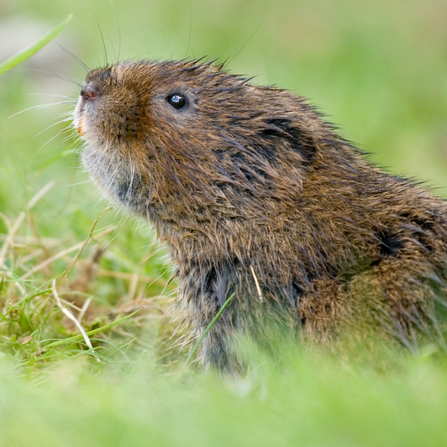
(C) Tom Marshall
Yorkshire's water voles
The water vole is one of our most iconic and best loved British mammals. Bigger than most other vole species, the water vole has chestnut-brown fur, a blunt, rounded nose, small ears, and a furry tail, and is famously represented by 'Ratty' in Kenneth Grahame's classic children's tale The Wind in the Willows.
Living along rivers, streams and ditches, as well as other small bodies of water, the best signs of water voles are burrows in the riverbank, often with a nibbled 'lawn' of grass around the entrance.


